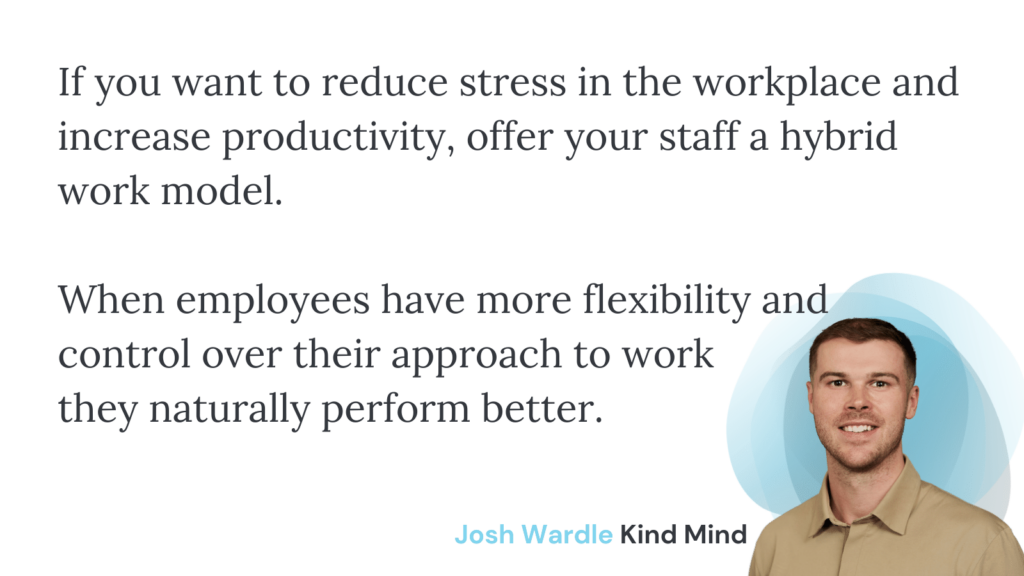Change has been constant over the past few years. Now facing recession, organisations and their employees are once again entering a period of change. As we look to cut operating costs, is hybrid working still the right model?
That’s what we will be looking at today.
Does recession spark the end of The Great Resignation and hybrid working?
Employees have enjoyed a period of empowerment, as talent shortages sparked by The Great Resignation gave staff better employment choices. This made returning our staff to work difficult, because they were used to much more freedom in when, where and how they clocked on.
As the UK feels the heat of the global recession, the predicted GDP is down for 2023, and inflation is rising again. It looks likely a national recession is coming. While companies gear up for financial hardship and look to cut costs, employees are watching.
Employees are feeling the pinch of even higher prices this year, and as they see business leaders focusing on costs, they will inevitably choose to stay longer in their jobs. While this means a swing of power back to the employer, it comes with a caveat – staff still favour hybrid working.
At the same time, those organisations that embraced hybrid working models early on now see the tangible benefits. 54% of employers recognise that employee productivity has improved with the introduction of hybrid and mobile working practices. In the same Omdia report, 41% of businesses announced actively increasing digital transformation budgets to make remote working easier in 2023.

Why we believe you should still offer hybrid working
Collectively we already know that human resources is changing and embracing the employee experience as a vehicle for productivity and profit growth. With this comes a need to adopt a more holistic “we are in this together” approach. This means listening to staff, understanding them and providing what they need in a way that elicits higher engagement.
Employees have enjoyed working from home. They have experienced more family time, increased flexibility and an improved work life balance.
We also know that digital transformation and hybrid working has reduced running costs and overheads for businesses. As well as boosting wider benefits, such as
- Increased employee productivity – By giving employees more flexibility and control over their work environment, businesses can often see an increase in employee productivity and engagement
- Improved employee retention – Offering hybrid work arrangements can help businesses retain employees who may be seeking a better work-life balance, leading to lower turnover costs
- Increased talent pool – By offering hybrid work, businesses can expand their pool of potential hires to include individuals who may not have been able to commute to a physical office
- Improved sustainability – Hybrid work arrangements can also have a positive impact on the environment, reducing commuting-related carbon emissions and other environmental impacts
So it makes sense that we keep hybrid working on the table, even if we enter a recession. The question now is – How do you optimise your hybrid policy?
How to optimise your hybrid working policy in 2023
Here at Kind Mind we believe there are several steps you can take to optimise your hybrid working model this year.
Step 1. Start with your employee experience
To really understand the people who underpin your company culture, you need to listen. This means going beyond staff surveys to establish
- who your staff are
- what their goals are
- what makes them feel more productive
- and where that fits into the question of hybrid working.
Once you have this documented, you can start redrafting your HR strategy. Don’t worry, we have a guide to help you here.
Step 2. Consider how you digitally transform your business
Taking more of your business online with the use of cloud computing allows your staff to work anywhere at any time. Within this, there’s a real opportunity to look at your processes and systems from a productivity and cost perspective.
Step 3. Don’t forget that balance must include mental wellness
There are always downsides to any choice you have. When it comes to hybrid working, employees can often feel disconnected and out of balance with the rest of their team. Poor mental health can be disruptive, and at worst debilitating for staff, so mental wellness is an important consideration.
Here at Kind Mind, we know a lot about mental and physical employee wellness. That’s why we designed an app that complements your people practices to help you provide support and build a positive culture wherever your staff are located.
As a result of implementing our app, businesses have seen significant shifts in employee engagement and leadership understanding of their experience. Meaning that reciprocal benefits combine to boost productivity and business growth.
We believe that by focusing on these three steps, you will be on the right road to a hybrid working model that excels in anything you had before.
Join us as we dive deeper into the hybrid working conversation.






